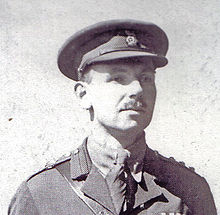William Howard Livens
| William Howard Livens | |
|---|---|

William Howard Livens
|
|
| Born | 28 March 1889 |
| Died | 1 February 1964 (aged 74) London |
| Allegiance |
|
| Service/branch |
|
| Years of service | 1914–1919 |
| Rank | Captain |
| Battles/wars | World War I |
| Awards |
Distinguished Service Order Military Cross |
| Other work | Consultant to Petroleum Warfare Department in World War II |
William Howard Livens DSO MC (28 March 1889 – 1 February 1964) was an engineer, a soldier in the British Army and an inventor particularly known for the design of chemical warfare and flame warfare weapons. Resourceful and clever, Livens’ successful creations were characterised by being very practical and easy to produce in large numbers. In an obituary, Sir Harold Hartley said "Livens combined great energy and enterprise with a flair for seeing simple solutions and inventive genius."
Livens is best known for inventing the Livens Projector, a simple mortar-like weapon that could throw large drums filled with inflammable or toxic chemicals. In World War I, the Livens Projector became the standard means of delivering gas attacks and it remained in the arsenal of the British army until the early years of the Second World War.
Livens' parents were Frederick Howard Livens (1854–1948) and Priscilla Abbott. They married on 9 October 1886 at the Upton Congregational Church. Frederick Howard Livens was Chief Engineer and later Chairman of Ruston and Hornsby in Lincoln. Frederick and Priscilla had three children, William Howard and two younger daughters.
In 1903, Livens was sent to Oundle School, a famous public school located in the ancient market town of Oundle in Northamptonshire, England. While there, he enrolled in the Officer Training Corps (OTC) wherein he served with the rank of sergeant.
On leaving school in 1908, Livens went to Christ's College at the University of Cambridge from 1908 to October 1911. There he enrolled in the college OTC and served with the rank of private. He was captain of the Cambridge rifle team, he was a crack shot and made a record score in a competition with a team from Oxford University; he was also an excellent shot with a pistol.
...
Wikipedia
